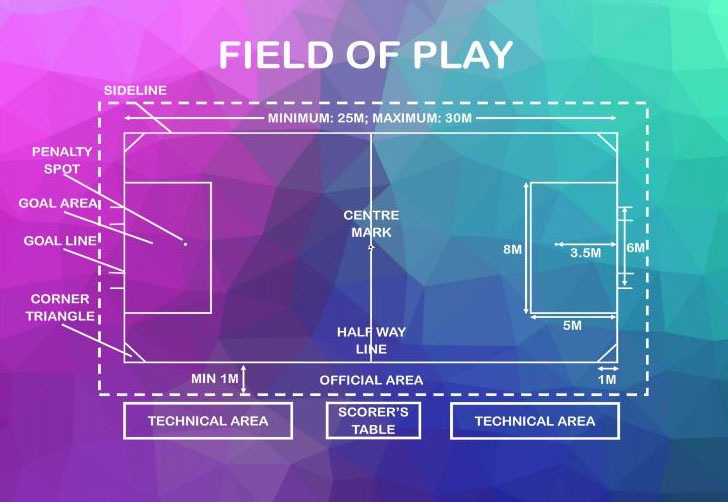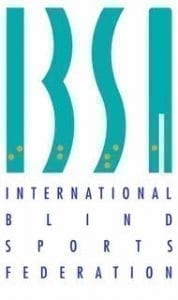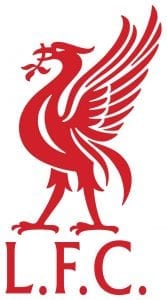Powerchair football, also known as power soccer, is a fast paced indoor team sport for people who use power wheelchairs.
With well over 1000 players participating in the sport on a weekly basis in the UK, Powerchair Football is the fastest growing disability team sport in the country.
It’s unique in that it’s the first and only active team participation sport for people who use electric wheelchairs.
The sport is lauded as giving an opportunity to people with a wide variety of disabilities. Athletes’ disabilities include quadriplegia, multiple sclerosis, muscular dystrophy, cerebral palsy, and many others.
It also allows people of all genders, ages and disabilities to compete together, making it one of the worlds most inclusive sports.
Powerchair football makes heavy demands on the player’s chair control skill, including controlling the speed, acceleration and precision of the chair. It is a technically difficult sport to play.
How Powerchair Football is played
The game is played by 2 teams of 4 players, all of whom use an electric wheelchair to move themselves and the ball around the pitch.
There are three basic positions in a powerchair team.
- Goalkeeper
- Centre
- Winger (x2)
Each team is also allowed 4 substitutes (a total squad of 8) and there are an unlimited number of substitutions (i.e. rolling substitutes).
A match lasts 40 minutes and consists of two 20 minute halves. The game only stops when the ball goes out, a goal is scored or there is a foul.
The ball is primarily moved around using a spin kick. Where players quickly spin their wheelchair around in a tight circle to catapult the ball forward.
A goal is scored when the ball completely crosses the goal line. Each goal is worth one point. The team with the highest score at the end of the game is the winner.
It’s a tactical game and a lot of goals are scored from set-plays. Tactics often focus on create new set plays that teams are not used to.
The game is played indoors usually on a basketball court as the surface must be hard, smooth and level for reasons of safety. It is usually on a wooden floor and teams are advised to avoid using concrete or tarmac pitches. The regulation size is 30mx18m.
Court Markings
The rectangular field is marked with two longer boundaries called touch lines and two shorter lines are called goal lines.
All lines are a minimum of 5 cm (2 in) wide. The field is divided into two halves by a halfway line.
The centre mark is indicated at the midpoint of the halfway line. The mark may consist of a 15 cm (6 in) “X” taped securely onto the floor with contrasting/non-damaging tape.
A goal area is marked at the centre of each end of the field, 8 m (26 ft) wide and 5 m (16.5 ft) deep.
A penalty mark is placed 3.5 m (11.5 ft) from the goal line and equidistant from each goalpost to indicate the location of the ball during the taking of penalty kicks. The mark may consist of a 15 cm (6 in) “X” or line taped securely onto the floor with tape.
It is vital that there is adequate space around the pitch for the substitutes, coaches and match officials
Rules and regulations
Freekicks and fouls
If a ball leaves the field of play the following will be awarded;
- Kick-In (equivalent to a throw-in)
- Corner
- Goal Kick
- Set Ball
Two-on-one’s are not allowed (this is considered a replacement of the offside rule in traditional football). This means that if two teammates and an opponent are within 3 meters of the ball while it is in play, then it’s a foul and the referee will award an indirect free kick to the opposing team. The exception to this is if one of the two teammates is the goalkeeper.
Only 2 players from the defending team may enter the penalty area at any one time.
If more than 2 defenders enter their penalty area a free-kick will be awarded to the opposition. There is no restriction for the attacking team.
Tackling is allowed as long as it is playing attachment to playing attachment (the plastic bumper along the bottom of the wheelchair). Contact with any other part of the chair or is a foul and is not allowed.
Ramming is also banned. This is defined as when a player deliberately drives into an opponent, with or without the ball, at a high rate of speed or with excessive force. The opponent may be moving or standing still.
All opposition players must be 5m away from the ball when a free kick is taken and the set-piece taker can only touch the ball once.
Penalties
Penalties can be awarded for fouls such as heavy contact or ramming an opponent. These are taken 3.5m from the goal line. The goalkeeper must remain behind the goal line until the ball is struck. All other players must be behind the ball and at least 5m from the ball.
In the UK the sport is governed by the The Wheelchair Football Association (WFA). The WFA are recognised by the Football Association and the laws and rules are sanctioned by them. In the US the sport is governed by the US Power Soccer association.
This document has more information on the laws of the game (opens as a pdf)
Classifications
There are two eligible classes: PF1 (higher-level impairment) and PF2 (lower level of impairment). A team must have a minimum of two PF1s on court at any time. This is usually for international fixtures only
Equipment
Powerchair Balls
The sport uses an oversize football / soccerball. The surface of the ball is exceptionally smooth to achieve optimum contact between chair and ball to enable great control. The diameter is 33 cm and weight approximately 1000 grams. It is much heavier than conventional football in order to stop the ball from leaving the ground during play.
Here at Goalfix we suppply a high quality powerchair soccer ball designed for match use.
Goals
Powerchair goals are 6m wide and consist of two upright posts (pylons or cones). There is no crossbar and unique Powerchair Football goalposts are used for safety.
Protective equipment
Head Protection: Goalfix supplies the halo360 Head Guard to protect against head impact in all blind contact sports.
Players often also wear knee and elbow pads.
Wheelchairs
Each player must play in an electric wheelchair.
The maximum speed allowable during the match for powerchairs is 10 kph (6.2 mph), forwards and reverse.
This wheelchair must be equipped with:
- A lap seatbelt
- 4 or more wheels (3 or 4-wheeled scooters or similar equipment are not permitted)
- additions should be placed on the powerchair which prevent the wheels from trapping, holding, or riding over the ball
- A Footguard
A huge contributing factor to the increase in the intensity level of the sport over recent years is the development of a specifically designed Powerchair called the “strikeforce”.
This has an increased turning speed and a low to the ground design to improve manoeuvrability. The chairs cost between £7500 and £9000 depending on adaptations needed for each player.
Footguard
The footguard is perhaps the most important piece of equipment and comes with its own distinct set of rules.
It must consist of unbreakable material and be securely attached to the powerchair. Its surfaces must be solid and not angled to hit the ball upwards and all surfaces must be flat or convex. Concave surfaces are not allowed. No part of the footguard can be constructed to trap or hold the ball.
For more information on footguards see the FIPFA rule book.
Power Soccer is an expensive sport
Powerchair Football can be an expensive sport to play. Powerchairs cost over £5000 each. The footguards can cost over £600 each.
If the chairs break then it is expensive to repair. Add this to renting a sports hall to train in every week and the cost mounts up.
Powerchair football clubs therefore rely heavily on sponsorship, fundraising and grant money to survive.
A brief history of the game
Powerchair football was first played in France in the 1970s when teachers invented the sport as a way for students to play football even with physical disabilities.
It has since grown into an international sport, with more than 250 teams competing worldwide.
The game developed independently in France, Canada, Japan and the US before 2005 when several nations met to develop a shared or standardised set of rules to allow them to compete against each other.
This led to the inauguration of the International Powerchair Football Association (IPFA) which later became FIPFA, the Federation Internationale de Powerchair Football Associations.
FIPFA has submitted numerous bids to the IPC in an effort to be selected as a new sport at the Paralympic Games. Powerchair football’s bid for the 2016 Rio Paralympics failed in 2010. The sport’s bid for the 2020 Tokyo Paralympics was also rejected in 2015. Once again another bid was under consideration in 2019 for the 2024 Paris Paralympics but was not selected.
International tournaments
There have been three powerchair world cups.
| Year | Winners |
| 2007 | United States |
| 2011 | United States |
| 2017 | France |
European governing body European PFA runs the EPFA Nations Cup for national teams, which acts as a qualifying round for the world cup. France were the winners in 2014, and in 2019 England won after extra time and penalties.
It also runs an annual club cup, EPFA Champions Cup, where 10 club sides compete to be European champions.
There is also an America’s Cup which the USA won in 2014 and 2019.
National powerchair leagues
United Kingdom
As of January 2019 there were 107 affiliated powerchair football teams across England and a competition pathway from recreational activity, regional competitions, a National League and Cup, up to representing England on the world stage.
Some of the UK’s top premier league clubs have powerchair teams including Manchester United, Manchester City and Newcastle United.
The Wheelchair Football Association have the following in place:
- National League. This comprises of 2 divisions (the premiership and the championship with a total of 24 clubs, 150 registered players, and 264 fixtures over 21 days of competition.
- WFA Cup (19 teams)
- 6 Regional Leagues (North West, North East, West Midlands, East Midlands, South West, South East)
- England team part of the FA Elite programme
USA
In the USA there is pyramid system as well as a national team.
The conference – Its teams represent the highest level of competition within the USA. There are four conferences with ten teams in each league. The leagues are:
The conference system uses a promotion and relegation process to organically move teams up and down through the conferences based on their performance each year.
These teams must play a minimum of 12 sanctioned games in the regular season, including two that are within or above their conference. Conference teams that meet this requirement are eligible to play in a Conference Cup Championship tournament at the end of the season.
Non-Conference Teams are still competitive, just not within the conference system itself. These teams do not have a minimum game requirement for the season, but if they wish to be considered for conference level play the following season, they must play a minimum of six sanctioned games.
Recreational teams and programs are ideal for those who would like to host a program, but aren’t interested in playing sanctioned or competitive games.
Other national leagues
There are other national powerchair leagues in:
- France https://foot-fauteuil.fr/
- Canada http://powerchairfootballcanada.com/en/
- Japan http://www.web-jpfa.jp
- Ireland http://www.aipf.ie/
- Scotland https://thespfa.org/
- Switzerland https://www.swisspfa.ch/
Countries with national teams or national governing bodies that are currently developing their league structure.
- Finland http://www.palloliitto.fi/
- Austria http://www.erollifussball.at/
- Australia (has a national championship tournament rather than a league) http://apfa.org.au/
- Denmark http://powerchairfootball.dk
- Argentina http://www.pcfa.com.ar/
- Brazil http://www.abfc.org.br/
- Spain http://www.acpfe.es/
- Uruguay http://www.fundacionoportunidad.org/
- New Zealand https://www.nzpf.nz/
- Wales
- Hong Kong
- India
- South Korea
- Italy http://www.sportsmile.it/powerchair.htm
- Turkey
- Poland
- Singapore http://www.mdas.org.sg/
- Northern Ireland http://www.irishfa.com/foundation/disability-football
- Portugal
- Belgium
Find out more
Wheelchair Football Association (WFA) was formed in 2005 to govern the sport of Powerchair Football in England.
Power Soccer USA is the governing body for power soccer in the United States.
FIPFA is an independent federation composed of National Organisations governing Powerchair Football in their separate countries (NOPF), one body per affiliated country.
Goalfix Sports is a specialist supplier of adaptive sports equipment.
If you are new to adaptive sports you may like to read our guide to blind football and guide to goalball.

















 £
£
 €
€
 $
$